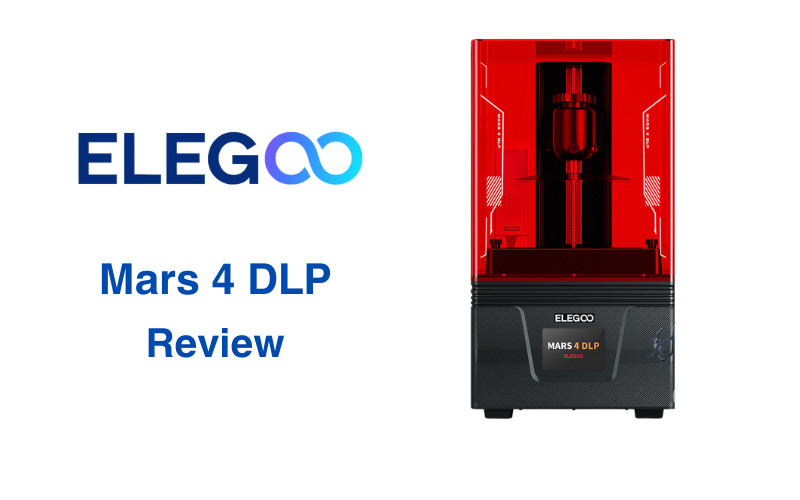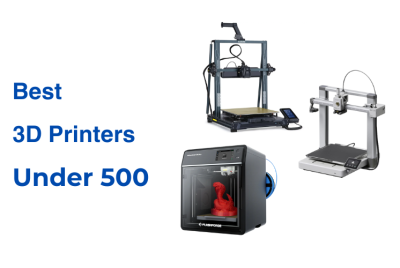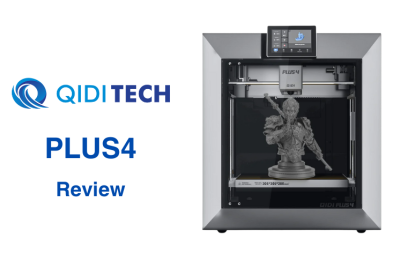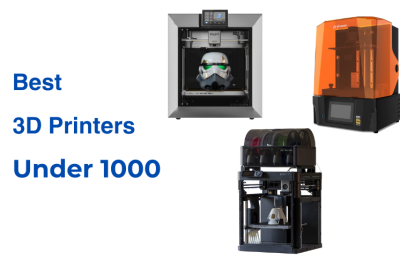Elegoo Mars 4 DLP Review
Resin 3D printing has become a favorite among creators for its ability to produce highly detailed models with smooth surfaces. It’s especially popular in industries like jewelry design, dentistry, and miniatures because of its accuracy and surface finish. There are two main technologies for resin 3D printing: DLP (Digital Light Processing) and LCD (Liquid Crystal Display). DLP printers use a digital projector to harden the resin layer by layer for consistent print across the entire build area. On the other hand, LCD printers use a screen to mask the areas that don’t need curing and expose those that need to form layers. LCDs are more common because of their lower cost. However, DLP printers often deliver better detail consistency and longer-lasting components. In this review, we’ll explore the features, capabilities, and overall performance of the Elegoo Mars 4 DLP.
Design and Build Quality
The Elegoo Mars 4 DLP has a sturdy metal frame that feels solid and well-built. Its compact size of 246 x 230 x 453 mm³ fits neatly on most desktops so it is practical for home or studio setups. Elegoo’s fanless design, combined with the STM32 silent motherboard, keeps noise levels below 48 dB. The resin vat and build platform are designed with durability. The 3.5-inch resistive touchscreen on the front keeps navigation straightforward, letting users control print jobs with ease. USB offline printing keeps the workflow simple without relying on constant internet access. Overall, the Mars 4 DLP combines durability with effective design features built for convenience.
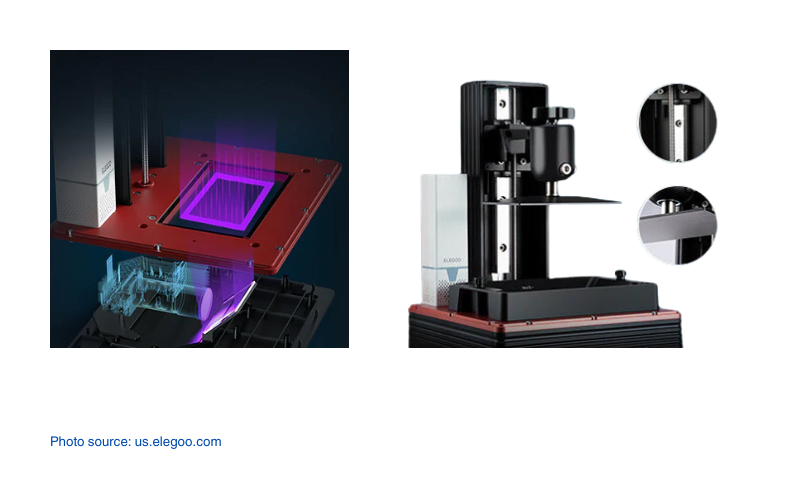
Key Features and Specifications
| Key Features | Specifications |
|---|---|
| High Performance DLP® Technology | Print Volume: 132.8 x 74.7 x 150 mm³ |
| Large Print Volume | XY Resolution: 0.05 mm (2560×1440) |
| Quiet Operation | Layer Thickness: 0.01-0.2 mm |
| Energy-Efficient | Z-Axis Accuracy: 0.02 mm |
| Enhanced Resin Adhesion | Printing Speed: 30-70 mm/h |
| User-Friendly Interface | Printing Technology: DLP |
| Broad Software Compatibility | Light Source: LG LED + 13-layer lens set |
| Air Purifier: Plug-in activated carbon filter | |
| Display: 3.5-inch resistive touchscreen | |
| Data Input: USB offline printing |
The Elegoo Mars 4 DLP brings advanced DLP® 3D printing technology into the hands of creators, delivering sharp, consistent results while using minimal power. Its print volume of 132.8 x 74.7 x 150 mm³ is ideal for producing highly detailed models. The Mars 4’s DLP projector uses LG’s LED light source paired with a 13-layer lens set, delivering light intensity up to 4mw/cm² and uniformity up to 95%. This results in better accuracy compared to LCD printers of the same resolution.
Its quiet, fan-free design reduces noise to just 48 dB, making it a great choice for home or office use. The resin vat features ultra-clear tempered glass for excellent light transmission and reduced scattering, leading to better print quality. The 3.5-inch resistive touchscreen ensures smooth job management, while USB offline printing simplifies workflow. The printer is also compatible with multiple slicing software platforms like Voxeldance Tango, Autodesk Fusion, CHITUBOX, and Lychee Slicer.
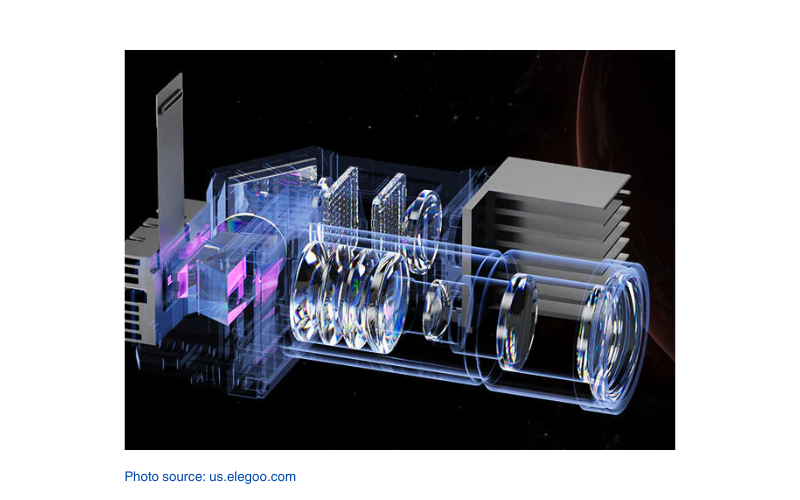
Comparisons
Mars 4 DLP vs. Anycubic Photon D2
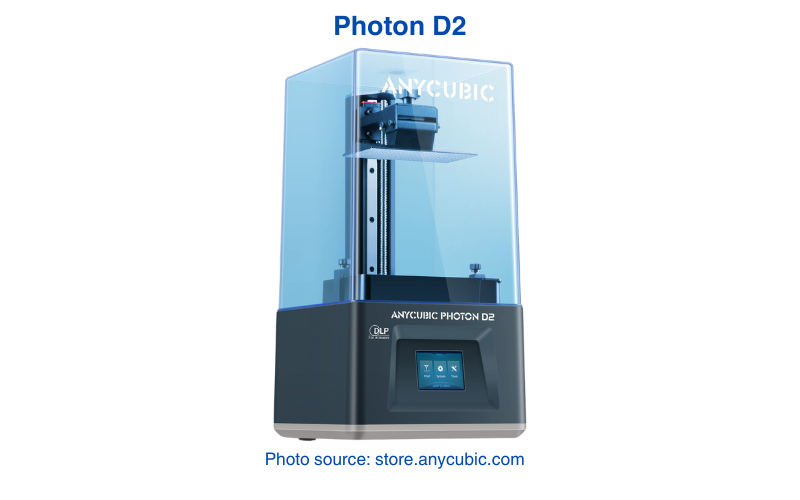
The Mars 4 DLP and Anycubic Photon D2 are both high-performing DLP resin printers. But they excel in different areas based on their design and features.
- Print Volume: The Mars 4 DLP features a build area of 132.8 x 74.7 x 150 mm³, having a slightly more width and depth than the Photon D2’s 131 x 73 x 165 mm³. However, the Photon D2 supports taller models.
- Light Uniformity: With light uniformity of up to 95%, the Mars 4 DLP produces more consistent prints compared to the Photon D2’s 92%. This helps reduce surface imperfections in finished models.
- Projector Resolution: Both printers have a 2K DLP projector with a resolution of 2560 x 1440 pixels, ensuring detailed models with fine edges and clean lines.
- Energy Consumption: The Mars 4 DLP consumes only 12W, while the Photon D2 uses 15W, giving the Mars 4 an edge in long-term energy savings.
Mars 4 DLP vs. XYZprinting Nobel Superfine
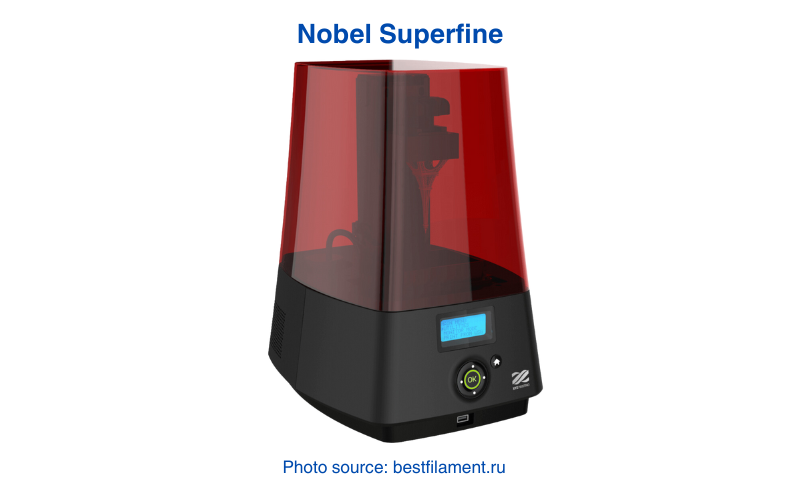
The XYZprinting Nobel Superfine is another DLP printer, though it’s designed for smaller, intricate projects. On the other hand, Mars 4 DLP supports larger builds and has modern features.
- Print Volume: The Mars 4 DLP offers a generous build area of 132.8 x 74.7 x 150 mm³, far surpassing the Nobel Superfine’s limited 64 x 40 x 120 mm³. This makes the Mars 4 DLP better suited for larger models and multi-part projects.
- Light Technology: Both printers rely on DLP projection, but the Mars 4 DLP uses a more advanced projector with a 13-layer lens set, delivering better light intensity and reducing print defects. The Nobel Superfine’s older light system doesn’t match this level of performance.
- Energy Efficiency: The Mars 4 DLP runs at just 12W, while the Nobel Superfine consumes significantly more power due to its outdated components.
- Durability: The Mars 4 DLP’s projector has a rated lifespan of over 20,000 hours, significantly reducing maintenance compared to the Nobel Superfine, which requires more frequent light source replacements.
Real World Applications
The Mars 4 DLP opens up creative possibilities across different industries thanks to its advanced DLP technology and consistent print quality. Here’s how it fits into various fields:
- Jewelry and Accessories: Create custom jewelry models like rings and pendants with fine textures that are ready for casting. Its accuracy ensures smooth designs with well-defined edges, making it a top choice for jewelry makers.
- Miniatures and Figurines: Fans of tabletop gaming, model-making, and collectible figures will appreciate how the Mars 4 DLP produces life-like characters and small models with high clarity, perfect for display or gameplay.
- Product Prototyping: Engineers and designers can quickly develop product prototypes for gadgets, components, and small devices. This helps bring creative concepts from digital designs to physical models for testing and refinement.
- Dental and Medical Models: The Mars 4 DLP supports creating dental models, orthodontic trays, and surgical guides that require accuracy and precision. Its technology ensures consistent results, meeting the exacting standards of medical professionals.
- Custom Art and Design: Artists can use the printer to bring digital art into the real world, producing sculptures, design pieces, and custom displays. Its fine printing capability brings even the most complex designs to life.
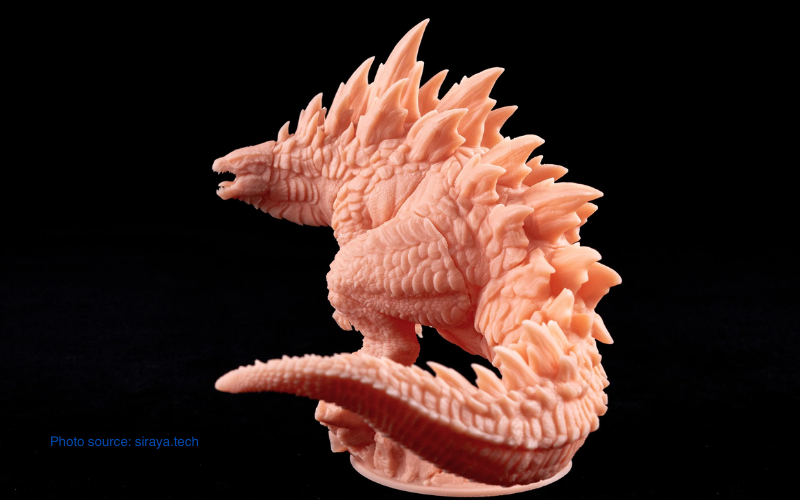
Conclusion
The Elegoo Mars 4 DLP sets a new standard for resin 3D printing with its advanced DLP technology, high light uniformity, and long-lasting performance. Its combination of a 2560 x 1440 resolution projector, LG LED light source, and 13-layer lens system results in sharp, consistent prints. The generous build volume of 132.8 x 74.7 x 150 mm³ accommodates various projects, from miniatures to functional prototypes.
What truly separates the Mars 4 DLP from traditional LCD printers is its 20,000+ hour projector lifespan, which minimizes maintenance while lowering long-term costs. Its ultra-low 12W power consumption keeps energy use in check, making it efficient and environmentally friendly. The quiet fanless design ensures a peaceful workspace, ideal for home or professional environments. If you’re crafting jewelry, producing dental models, or building complex figurines, the Elegoo Mars 4 DLP delivers precise, consistent results with every print. Its thoughtful design, advanced technology, and ease of use make it a useful tool for creators, designers, and professionals alike.

